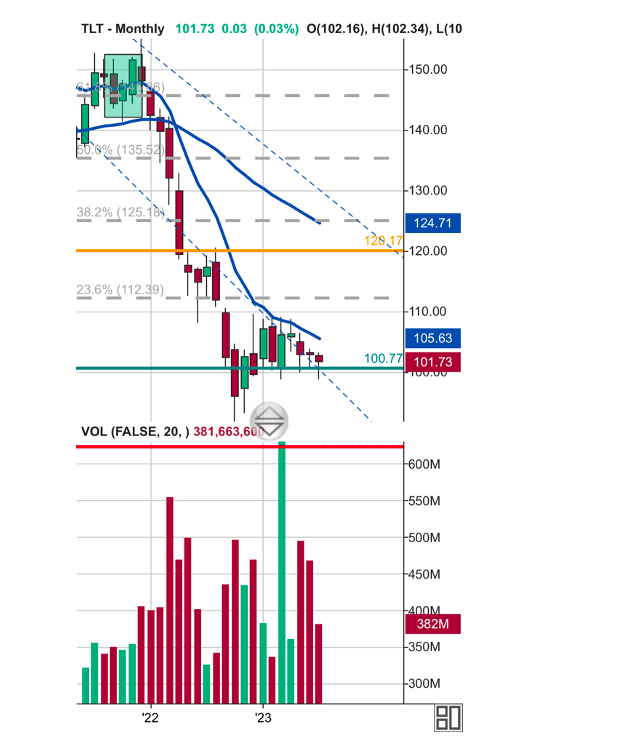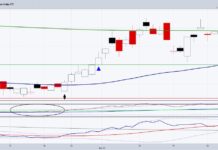
Featured here is the price chart of the ETF for long-term US Treasury Bond securities (ticker TLT).
In the summer of 2012, US Treasuries and the S&P500 (large caps) decoupled after trading together for about thirty years. This means that from about 1982 until 2012, as bond prices rose and interests fell, equities also rose. This relationship changed in 2012 during the peak of the Euro Crisis.
For the next eight years, until the pandemic in 2020, equities rose when Treasuries fell (interest rates rose). Why? Because as the global economy recovered from the Financial Crisis cycle, the US was the world’s safe haven or bank. Global investors sought refuge in US Treasuries during crisis or economic slowdown.
However, when the crisis abated whether here or abroad that money flowed out of Treasuries and into equities.
The relationship between large caps and Treasuries changed again in 2020. During the worst of the global pandemic, we saw both the S&P500 and US Treasuries rise. Scared money everywhere sought refuge in US assets.
In early 2021, I posed the question at SeeItMarket.com about what would happen when the various crises that brought money here began to flow out? That question was resolved in 2022 when both stocks and Treasuries fell, trading together again as they did from 1982-2012.
When a debt instrument, like bonds or US Treasuries, are sold the currency it is denominated in also falls. Hence, the value of the currency is devalued and and we get monetary inflation or rising interest rates. While Inflationary pressure is a sign of growth, what happens when the growth of the country issuing the debt instrument does not coincide with the growth of those holding the debt? I think we are about to find out.
There’s a lot of news that China continues to struggle post pandemic. But what happens when China’s economy finally wakes up just as the US economy has begun to slow down?
Well one way to imagine what can happen is to look at the housing market.
In the northwest, such as Seattle, you can look up homes and notice that the estimated rents are only a fraction of the cost to own the same property. What people are willing to pay for rent is closer to the reality of what wages can pay than what a seller hopes a buyer will pay. And this gross disconnect between rents and the cost of a mortgage is a sign that homes are overvalued in the northwest and other regions where rents and cost to buy are out of whack. The prevailing cause that we can all point to for this disconnect is that mortgage rates have doubled in the last year.
There are those who predict that rates should soften again. However, have we forgotten about China? China has struggled while the US economy heated up the last two years. If/when the Chinese consumer that has not been spending finally begins to do so then what can we predict will happen to Treasuries? We could expect that the money invested in Treasuries will flow back to China. And interest rates that are have already doubled here could double again.
Twitter: @rinehartmaria
The author may have positions in mentioned securities at the time of publication. Any opinions expressed herein are solely those of the author, and do not in any way represent the views or opinions of any other person or entity.








